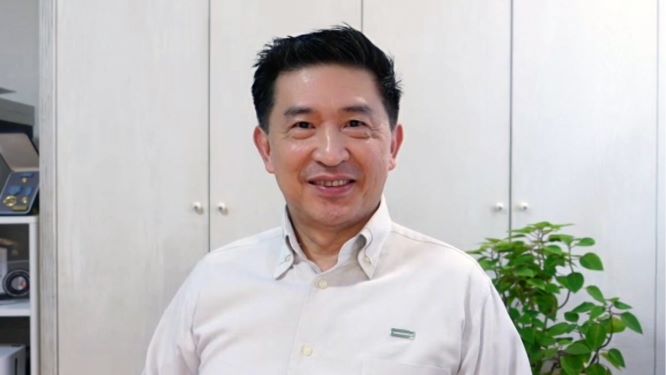

Data explosion pushes businesses to 'learn at the edge,' says AI exec
source link: https://siliconangle.com/2021/06/23/data-explosion-pushes-businesses-learn-edge-says-ai-exec-hpediscover/
Go to the source link to view the article. You can view the picture content, updated content and better typesetting reading experience. If the link is broken, please click the button below to view the snapshot at that time.

Extracting the most value from data often involves building artificial intelligence systems that can make predictions or assist business leaders in decision making. But storing the data and deploying smart models on an exceptionally large scale is too difficult and onerous.
The only possible way to deal with the explosion of data generated by the growing number of devices distributed around the world is to learn at the edge and not only from the edge “so that you don’t need to have to send all that data back and assemble it back from all the different edge devices, assemble it back to the cloud side to do the learning,” said Eng Lim Goh (pictured), senior vice president and chief technology officer of high-performance computing and AI at Hewlett Packard Enterprise Co. “With swarm learning, you can learn it and keep the data at the edge and learn at that point,”
Goh spoke with Dave Vellante, host of theCUBE, SiliconANGLE Media’s livestreaming studio, during the HPE Discover event. They discussed the barriers companies must overcome to thrive in this new era of data insights, how to apply artificial intelligence to an ever-increasing amount of distributed data, and how to set the limit on what to collect and store and how to do it. (* Disclosure below.)
Drop in storage cost is not enough
The global number of connected devices is growing astronomically and most of them can collect data, which means more and more data available to companies. One estimate points to around 55 billion devices connected by the next year, which far exceeds the world population, which is about 7.8 billion, according to Goh.
While the cost of storage has been dropping and is likely to continue to do so for years to come, keeping data from these devices will still be prohibitive, Goh added. Likewise, although computer power is increasing, it will not be enough to process all this information.
“So, what’s the answer? The answer must be [that] to start at least to mitigate the problem, leave both a lot of the data out there and only send back the pertinent ones,” Goh said. “But then if you did that, how are we going to do machine learning at the core and the cloud side if you don’t have all the data? You want rich data to train with.”
When you do not have and cannot have all the data in the cloud to apply machine learning there, the solution is to deploy the models at the edge, Goh added.
“Today, we don’t have enough power. The edge typically is characterized by a lower energy capability and therefore lower computer power,” he pointed out. “But soon, even with lower energy, they can do more with computer power improving energy efficiency.”
Choosing what to store is a tension point
The problem of where to put the data and apply AI is not the only one facing enterprises that want to thrive in this new era of insights. What data to collect and store is another high-tension point for companies, according to Goh.
For example, one of HPE’s customers is training autonomous cars and collecting about 10 petabytes of data a day from its fleet so it can eventually deploy commercial vehicles. However, because it is a large amount of data, the company realized that it does not want to store it all and is at an impasse over what to discard.
“After I spent so much effort building all these cars and sensors and collecting data, I’ve now to decide what to delete. That’s a dilemma right now,” Goh stated. “We are working with them on this process of trimming down what they collected.”
The worry is that what is junk today could be valuable tomorrow, and companies do not want to ignore the wrong data. And that depends a lot on the industry. While healthcare wants to keep everything, for example, other sectors, such as banks, although also heavily regulated, do not want to retain all date, according to Goh.
“There is this constant tension between you, perhaps, deciding not wanting to fund all of what you can store but on the other hand, if you kind of don’t want to afford it and decide not to store some, [what] if some become highly valuable in the future?” he concluded.
Watch the complete video interview below, and be sure to check out more of SiliconANGLE’s and theCUBE’s coverage of the HPE Discover event. (* Disclosure: TheCUBE is a paid media partner for HPE Discover. Neither Hewlett Packard Enterprise Co., the sponsor for theCUBE’s event coverage, nor other sponsors have editorial control over content on theCUBE or SiliconANGLE.)
Photo: SiliconANGLE
A message from John Furrier, co-founder of SiliconANGLE:
Show your support for our mission by joining our Cube Club and Cube Event Community of experts. Join the community that includes Amazon Web Services and soon to be Amazon.com CEO Andy Jassy, Dell Technologies founder and CEO Michael Dell, Intel CEO Pat Gelsinger and many more luminaries and experts.
Join Our Community
We are holding our second cloud startup showcase on June 16. Click here to join the free and open Startup Showcase event.
“TheCUBE is part of re:Invent, you know, you guys really are a part of the event and we really appreciate your coming here and I know people appreciate the content you create as well” – Andy Jassy
We really want to hear from you. Thanks for taking the time to read this post. Looking forward to seeing you at the event and in theCUBE Club.
Recommend
About Joyk
Aggregate valuable and interesting links.
Joyk means Joy of geeK